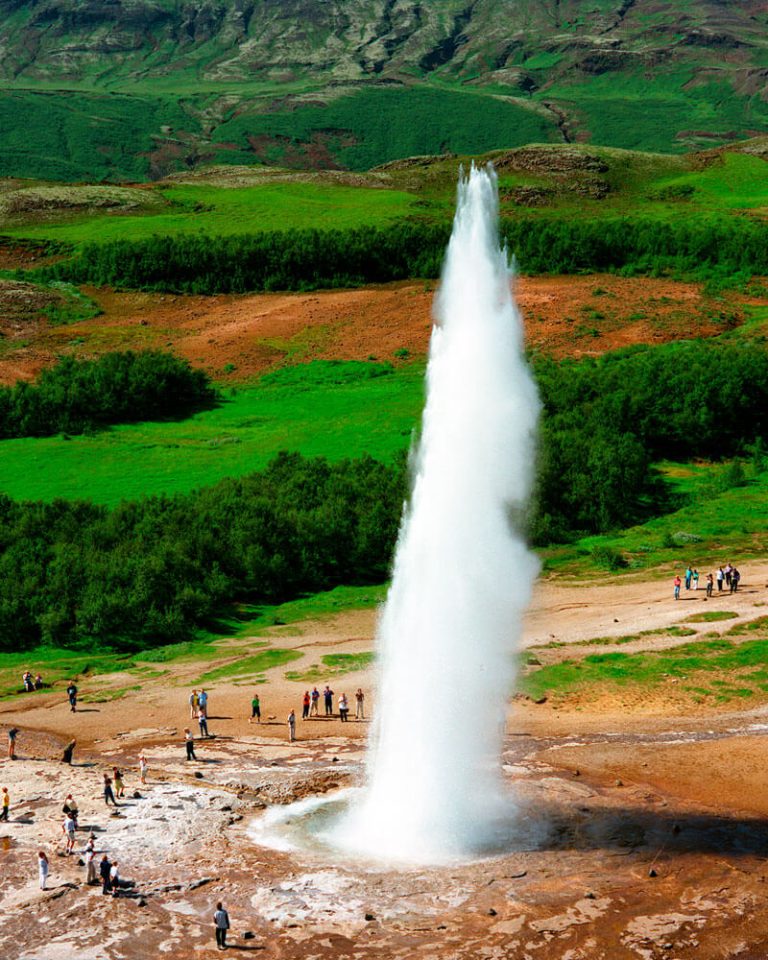1937 – The Norwegian scientist Tom F. Barth studied the area and at that time Geysir erupted 4-5 times every 24 hours, the sout reaching up to 60 m.
1944 – Geysir discharging 4.7 l/s, but did not erupt. The water in Strokkur was 0,6 m below the surface.
1953 – The Geysir Committee was founded; rules concerning the area were published and the area was fenced off to keep away livestock.
1954 – Geysir ceased to erupt without soap.
1963 – This year the Strokkur geyser was cleaned with a drill down to 40 m. It had been dormant since 1907, but now started to erupt and has continued ever sice every 8-10 min.

